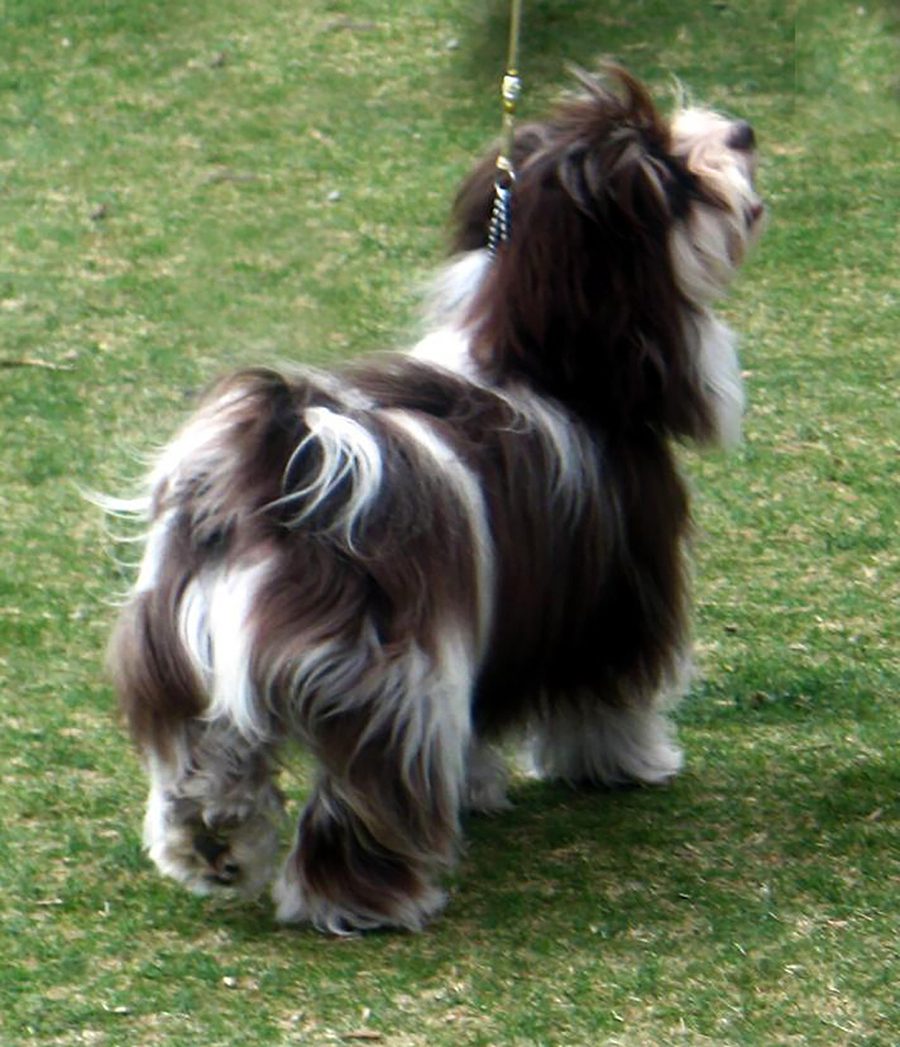Havana Silk Havanese - AKC Breeder of Merit
Havanese Coat Color Genetics
Rightfully named the “Havanese rainbow” due to the incredible array of colors, these dogs display a broad spectrum of hues ranging from pure white to luscious chocolate to coal black, with numerous shades in between. An intriguing aspect is that Havanese puppies may initially possess one color but undergo fascinating transformations as they mature, revealing new captivating shades along the way!
Genetics
While it may seem like coat color is determined by chance, Gregor Mendel demonstrated long ago that genetics is a scientific discipline that governs an organism’s characteristics, including the color of a Havanese dog’s coat. With a solid understanding of genetics, dominant and recessive genes, mutations, and potential alleles, it becomes possible to predict the color of Havanese puppies based on statistical probabilities. From just two pigments, the Havanese coat color can exhibit a multitude of variations, contributing to the uniqueness of each dog.
The genetic information crucial to Havanese is contained within the nuclei of their cells. Each dog possesses 39 pairs of chromosomes in every cell, with 39 inherited from the mother and 39 from the father. One of these pairs determines the dog’s sex, while the rest contribute to the unique traits that define the individual.
Chromosomes consist of numerous genes that carry specific traits encoded in DNA. These alleles, located at specific sites called loci on chromosomes, come in pairs, with one allele inherited from each parent. The dominant allele at each locus determines Havanese dog’s expressed traits, including coat color. When Havanese reproduce, the mother and father randomly pass on one allele from each locus, resulting in a 50% chance for each allele to be inherited by the offspring.
Two Fundamental Colors
Two fundamental pigments determine Havanese coat color at the core: eumelanin (black) and phaeomelanin (red). All the various color variations in dogs (purebred and mixed) are created by these two pigments, which are different forms of melanin.
Melanocytes are the cells within hair follicles that produce and deposit melanin as the hair grows, determining the primary coat color. The more melanin present, the darker the pigment of the coat. However, melanin production is not always constant, leading to variations in color within a Havanese dog’s hair shaft, such as having a darker tip than the rest of the hair.
Eumelanin and phaeomelanin have default colors that different genes can modify. By default, eumelanin is a black pigment, but genes can adjust it to produce other colors like brown (liver), grey (blue), or pale brown (isabella or sable). These genes dilute the eumelanin, preventing the production of full-strength black pigment.
Phaeomelanin is the second pigment that determines Havanese coat color. Its default color is gold or yellow, producing shades of red ranging from deep red to orange, cream, gold, yellow, or tan. Genes regulate the intensity of phaeomelanin, making the color stronger or weaker. Unlike eumelanin, phaeomelanin only affects hair color, not eye or nose color.
The combination of eumelanin and phaeomelanin, in all their forms, gives rise to the vast range of Havanese coat colors. The absence of pigment production in cells results in white hair in dogs. This lack of pigment production usually affects specific parts of the dog’s coat, leading to Havanese with white markings. When eumelanin is not produced in the nose, it turns pink, and the absence of eumelanin in the eyes results in blue eyes. Rarely the entire coat can be affected, resulting in an albino dog with red eyes.
Numerous genes influence Havanese coat color by modulating these two fundamental pigments. The dog genome contains around 3 billion base pairs of DNA and thousands of genes, but only eight genes are directly associated with coat color. These genes are located at specific loci:
- A (agouti) locus: Controls different coat patterns by regulating the release of melanin into the hair and influencing the switch between eumelanin and phaeomelanin.
- B (brown) locus: Linked to brown, chocolate, and liver coat colors. It has two alleles: B (dominant brown) and b (recessive brown). Both recessive alleles (bb) are required to dilute black pigment to brown. In dogs with red or yellow pigmentation (phaeomelanin), the brown allele can change the color of the nose and foot pads to brown.
- D (dilute) locus: Responsible for diluting pigments, resulting in gray or blue coats from black or brown or very pale brown from red. A mutation in the melanophilin (MLPH) gene causes color dilution. The two alleles associated with dilution are D (dominant full color) and d (recessive dilute). Two recessive alleles (dd) are needed to lighten black pigment to gray or blue and red pigment to cream.
- E (extension) locus: Determines the presence of a black facial mask and the coat color, which can be yellow or red. It has four alleles in order of dominance: the melanistic mask (Em), grizzle (Eg), black (E), and red (e).
- H (harlequin) locus: Associated with white dogs with black patches. It often interacts with the merle locus to create different combinations of spots and colors.
- K (dominant black) locus: Controls dominant black, brindle, and fawn colors. This locus includes colorations previously linked to other genes, like agouti.
- M (merle) locus: Identified as the site responsible for the merle pattern. Merle dilutes only eumelanin (black) pigment, and dogs with red or yellow pigmentation can produce merle offspring.
- S (spotting) locus: Linked to coat color patterns like piebald, parti-color, and extreme white, which result in coats with asymmetrical white spots.
These loci work independently or in combination to regulate the production and distribution of eumelanin and phaeomelanin, ultimately determining the Havanese dog’s coat color. However, a Havanese with a specific coat color may carry hidden colors in its genetic makeup that may manifest in its offspring. It’s why Havanese puppies may not resemble either parent entirely.
Genes are crucial in determining Havanese coat color. They control the production of pigments (eumelanin and phaeomelanin) as well as their distribution in different cells. Genes can instruct certain cells to produce eumelanin, others to produce phaeomelanin, and some cells to produce no pigment. They can even direct a cell to switch between producing eumelanin and phaeomelanin, resulting in hair that displays both black and red colors.
Knowing the family tree is crucial to predicting future Havanese offspring’s coat color, although it may not always provide exact specificity. Specific genes responsible for Havanese coat colors or patterns can be recessive and remain hidden across generations, yet they are still genetically present. These hidden genes can manifest when a Havanese is bred with another Havanese possessing a specific genotype. Genetic testing is the sole reliable method to accurately determine the genetic heritage of a Havanese dog’s coat color.








